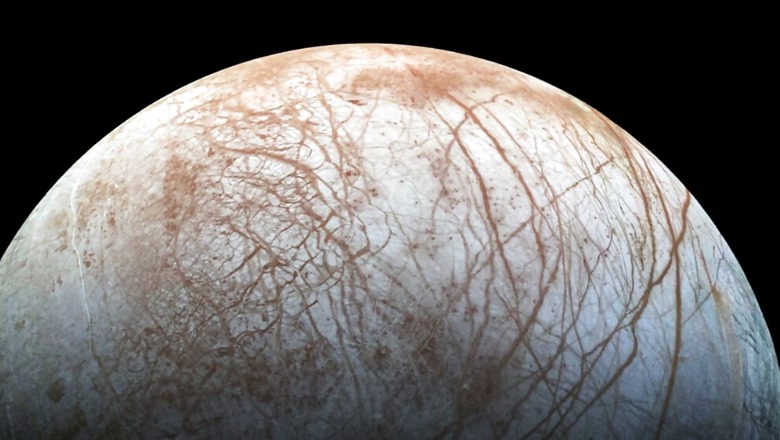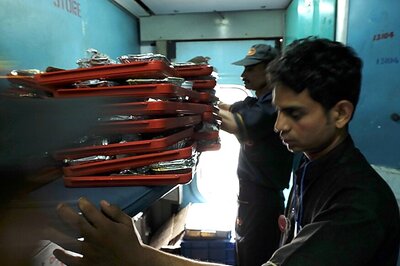
views
One of Jupiter’s moons known as Europa is now believed to generate a lot more oxygen than previously thought. The study, which was published on Monday in the journal Nature Astronomy, estimates that 1,000 tonnes of oxygen are released from the moon’s surface every 24 hours which is enough to sustain a million people for a day. The discovery predates NASA’s planned robotic expedition aimed to explore this moon, which is slated to start later this year.
This data was gathered on September 29, 2022, during a flyby of Europa by Juno’s Jovian Auroral Distributions Experiment (JADE) instrument. The amount of oxygen produced by Europa was estimated to have changed significantly in the past, from a few pounds to over 2,000 pounds per second. But according to the most recent JADE data, Europa appears to be releasing about 26 pounds of oxygen every second.
Europa’s oxygen content is particularly noteworthy since scientists think that underneath its icy surface, the moon possesses a vast ocean. Astrobiologists estimate that components necessary for life may exist in this ocean. The ocean itself may be the source of the oxygen, or it may come from charged particles from Jupiter striking Europa’s ice shell, breaking apart water molecules and producing oxygen.
According to JADE scientist Jamey Szalay of Princeton University in New Jersey, Europa is similar to an ice ball that is gradually shedding water in a stream—but in this particular case, the stream is made up of ionised particles that Jupiter’s strong magnetic field is sweeping around. Hydrogen and oxygen are produced as the water ice on Europa’s surface is broken up molecule by molecule by these ionised particles. He continued, saying that “waves of charged particles” splashing out onto the ice shell are eroding it continuously.
NASA intends to explore Europa’s possible habitability in further detail with its scheduled Europa Clipper mission, which is scheduled to launch in October. The spacecraft will investigate the moon’s oxygen production and look for indications of life-sustaining conditions using a variety of scientific gauges. It is anticipated that the Europa Clipper will enter the Jovian system around 2030.




















Comments
0 comment